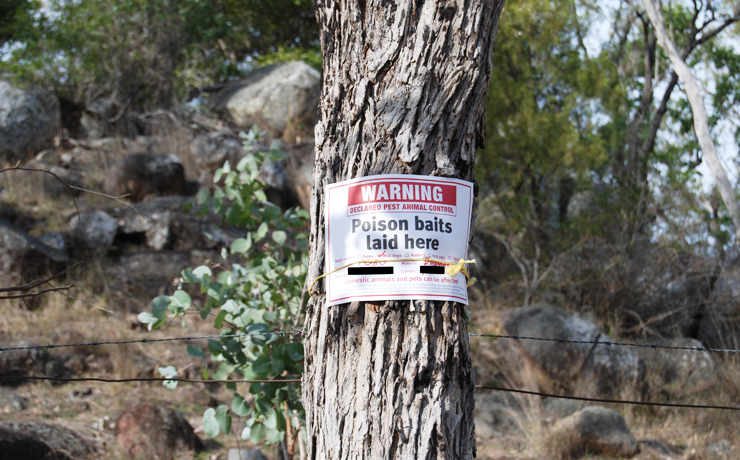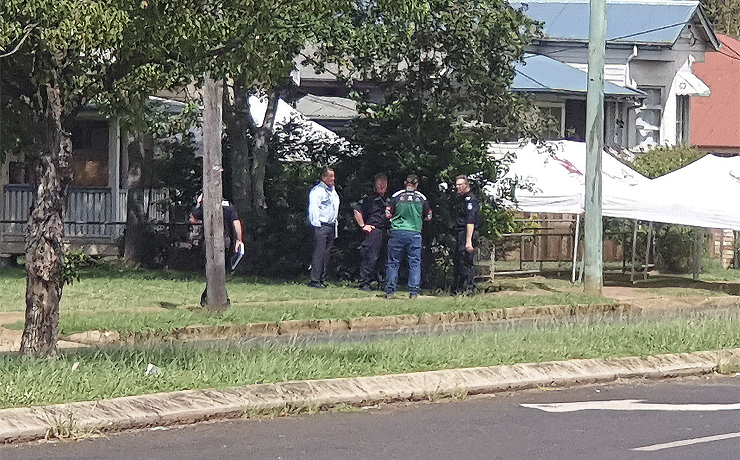
August 3, 2020
Researchers have linked an increase in the average size of dingoes to the use of poison baits.
Dingoes have grown about 6-9 per cent bigger over the past 80 years, according to research from the University of NSW and the University of Sydney – but the growth is only happening in areas where poison baiting is used.
The findings, published in the Biological Journal of the Linnean Society at the weekend, compared the sizes of dingoes that lived in three baited regions (Kalgoorlie, Pilbara and pastoral South Australia) with those from an unbaited region that stretched from the Northern Territory to South Australia.
The scientists measured the skull size – which is a marker of animal size – of nearly 600 dingo specimens originating from the sites.
“Skulls from the baited regions grew by about four millimetres since poison baiting was introduced,” said Michael Letnic, lead author of the paper and professor in conservation biology and ecosystem restoration at UNSW Science.
“This equates to roughly a kilogram in body mass.”
While both male and female dingoes grew, female dingoes had the biggest growth spurt. Their skulls increased by 4.5mm which is almost 9 per cent body mass. Male skulls grew by 3.6mm, or 6 per cent body mass.
But why are dingoes in poison-baited areas growing?
“The most likely theory is that dingoes who survive baiting campaigns have less competition for food,” co-author Associate Professor Mathew Crowther said.
He said dingoes’ primary prey, kangaroos, have been shown to increase in numbers when dingo populations were suppressed.
“With more food in abundance, dingoes’ physical growth is less restricted,” he said.
The pesticide sodium fluoroacetate – known as 1080 – is commonly used across Australia to control dingo and other pest populations.
Researchers said this was not the first time a pesticide has been linked to changes in animal bodies.
“Our interventions have consequences – and they’re actually quite predictable consequences,” Prof Letnic said.
“Whatever pressures we put on animal populations – be it pesticides or not – there will be side effects.”
The researchers said other factors that could have potentially led to the dingoes’ growth, such climate change or interbreeding with dogs, seemed unlikely.
“We only tested dingoes in areas that have very low dog hybridisation rates, making it highly unlikely that dog genetics are contributing to the size growth,” Prof Letnic said.
And – if anything – a warming climate would decrease dingoes’ body size, as cooler conditions favour larger animals.
Scientists usually observe these impacts in invertebrate pests: for example, some insects – like cockroaches – are becoming more resistant to the insecticides used on them.
However, this study is one of the first to show that vertebrates, like dingoes, also change from pesticide use.
“Poison baiting campaigns could be favouring the survival of larger dingoes,” Assoc Prof Crowther said.
“Smaller dingoes need less poison for a lethal dose, so are more likely to be killed by baiting. This leaves the larger dingoes to survive and breed.”
As a result of their growing size, the 1080 dose required to kill a dingo in the baited regions has increased since the toxin was introduced.
“The reaction to this finding may be to add more poison to the baits, or to find a new poison,” Prof Letnic said.
“But, eventually, the cycle will start again.”























